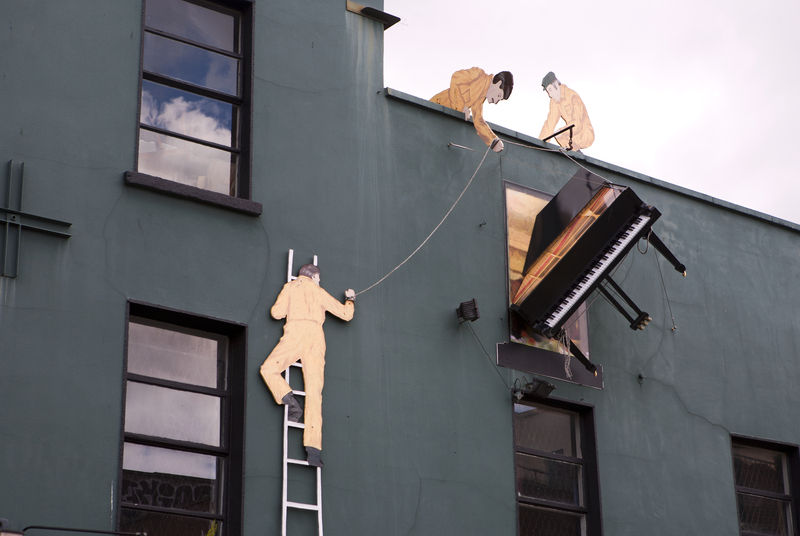Guarantee Sofa Freshness with Reliable Long-Term Storage Methods
Looking to store your beloved sofa for the long haul, but worried about musty smells, fabric damage, or sagging cushions? Wondering how to ensure your couch comes out just as fresh as the day it went in? You're in the right place! Our comprehensive guide explores top-rated long-term sofa storage strategies to keep your furniture clean, protected, and ready for future use.
Why Is Sofa Freshness Important in Storage?
The freshness of your sofa determines its comfort, lifespan, and overall aesthetic appeal. Over time, improper storage can lead to:
- Unpleasant odors that are hard to remove
- Deterioration of upholstery, both fabric and leather
- Mold, mildew, and pest infestations
- Structural damage such as warped frames and compressed cushions
This makes it essential to use only reliable long-term storage methods to guarantee that your sofa remains fresh, clean, and inviting for years to come.

Key Factors to Consider Before Storing Your Sofa
- Type and Material: Fabric, leather, and synthetic sofas each require specific steps for storage.
- Storage Location: Whether using a storage unit, basement, or garage, the location impacts humidity and temperature exposure.
- Preparation: Cleaning, disassembly, and proper packing are non-negotiable steps.
- Protection: Quality coverings, elevation, and pest-prevention strategies are a must.
How to Prepare Your Sofa for Long-Term Storage
A little preparation can go a long way in keeping your sofa fresh during storage. Here's a practical, step-by-step routine:
1. Thorough Cleaning Is a Must
- Vacuum: Start by vacuuming every nook and cranny, including beneath cushions and along seams, to eliminate dust, crumbs, and hair.
- Stain Removal: Spot treat any visible marks. Use appropriate cleaners based on sofa material (e.g., mild soapy water for fabric or leather cleaner for leather).
- Deep Clean: Consider steam cleaning or hiring a professional for optimal results.
- Dry Completely: Never store a damp sofa! Allow every part to air-dry, preventing mold and mildew.
2. Disassemble When Possible
- Remove Cushions & Pillows: Store separately in breathable bags for extra protection.
- Take Apart Recliners/Sectionals: If your sofa has removable arms, legs, or modular sections, disassemble to save space and prevent strain on joints.
- Keep Hardware Safe: Place screws and small parts in a clearly labeled bag and attach it to the sofa frame.
3. Use the Right Protective Coverings
- Breathable Covers: Always choose fabric covers over plastic. Plastic traps moisture, causing mildew and smells, while blankets or specialized storage covers allow airflow.
- Cushion Bags: Slip each cushion in a cotton bag or pillowcase to prevent dust buildup.
- Wrap Delicate Legs/Arms: Use bubble wrap or blankets to prevent scratches and dings.
- Never Store Uncovered: Bare sofas invite dust, pests, and stains.
The Best Environment for Long-Term Sofa Storage
Where you store your sofa determines how well it maintains its freshness and condition over time. Here's how to create the ideal storage environment:
1. Prioritize Climate-Controlled Storage
- Stable Temperature and Humidity: Fluctuations cause wood to expand or contract, leather to crack, and fabric to trap moisture, leading to mustiness.
- Professional Storage Units: Facilities offering climate control guarantee long-term sofa freshness by keeping heat and humidity in check.
- Avoid Garages and Basements: These typically lack proper insulation and ventilation--leading to fresher sofas in professional units.
2. Ensure Cleanliness and Pest Control
- Pre-Clean Space: Sweep and disinfect the storage area before moving in your furniture.
- Pest Deterrents: Place cedar blocks, natural pest repellent sachets, or commercial options nearby to ward off insects and rodents.
- Elevate the Sofa: Use pallets or risers to keep the sofa off the floor, reducing the risk of moisture and pests.
3. Optimize Air Circulation
- Don't Pack Too Tight: Crowding your storage unit restricts airflow and traps humidity. Allow space around your sofa for ventilation.
- Install a Dehumidifier: In especially humid climates, running a dehumidifier protects against mildew and odors.
Advanced Sofa Preservation Tips for Long-Term Storage
1. Use Desiccants for Moisture Control
- Silica Gel Packs: Place a few under the sofa and among cushions to absorb excess moisture.
- Baking Soda: A box or open tray placed nearby neutralizes ambient odors.
2. Regularly Inspect Your Storage Space
- Monthly Checks: Even in long-term scenarios, visit your storage site every month if possible.
- Look for Leaks & Pests: Early identification prevents long-term damage and odor development.
3. Rotate Cushions and Move the Sofa
- Redistribute Weight: Rest cushions on their sides and occasionally reposition the sofa to avoid permanent imprints or flattening.
Common Mistakes That Ruin Sofa Freshness During Storage
Avoiding these pitfalls is critical to guaranteeing sofa freshness with reliable long-term storage methods:
- Storing While Dirty: Even small food particles or body oils will lead to permanent discoloration and odor over time.
- Skipping Climate Control: Mold and mildew flourish in non-climate-controlled units, especially in humid climates.
- Using Plastic Wraps: These trap moisture, raising the risk of musty smells and fabric damage.
- Placing Furniture Directly on Concrete: Concrete draws moisture, which wicks into upholstery and wood.
How to Freshen Up Your Sofa After Long-Term Storage
When it's time to reclaim your sofa, follow these steps to ensure it's clean, comfortable, and inviting:
- Unwrap and Ventilate: Remove all covers and let your sofa air out in a dry, sunlight-filled space for a few hours.
- Vacuum Again: Get rid of any dust, debris, or potential allergens accumulated during storage.
- Spot Clean: Address any stubborn spots as soon as possible using appropriate cleaners.
- Fluff and Rotate Cushions: Restore shape and comfort by distributing the fill evenly.
- Optional Fresheners: Use fabric sprays or lightly scented sachets to restore a truly fresh scent--avoid overpowering chemicals.
FAQs on Long-Term Sofa Storage and Freshness
Can you store a sofa vertically to save space?
No. Storing sofas on their sides or ends puts stress on frames and upholstery, possibly causing warping and flattening. Always store flat and upright on their feet.
How often should you check on your sofa in storage?
Monthly checks are ideal, especially in the first three months. After that, quarterly is sufficient for professionally managed, climate-controlled units.
Do professional storage facilities guarantee sofa freshness?
Professional facilities dramatically improve the chances of keeping your sofa fresh by offering temperature/humidity control, pest management, and security, but proper prep and covering are still essential.
What are signs your stored sofa might need attention?
- Musty or sour odors from the storage area
- Visible stains or discoloration
- Signs of insects, webs, or droppings
- Mold spots, especially on cushions or under slipcovers

The Benefits of Reliable Long-Term Sofa Storage Methods
- Preserves monetary and sentimental value of high-quality or heirloom sofas
- Cuts down on cleaning and refurbishment costs when retrieving stored furniture
- Reduces health risks from allergens, mold, or pest remnants
- Helps maintain "like new" appearance for resale or future use
Conclusion: Sofa Freshness Guaranteed with Smart Storage!
Ensuring your sofa stays fresh after months or even years in storage isn't just wishful thinking--it's a result of proven, reliable long-term storage techniques. From pre-cleaning and prepping to utilizing climate-controlled units and protective coverings, each step adds up to a pristine, odor-free, and comfortable sofa ready for your next home or office. Remember, the care you invest before and during storage determines the condition of your sofa after you retrieve it.
Looking for more furniture storage and home organization tips? Make sure to bookmark this guide and share it with friends looking to maximize the lifespan and freshness of their valuable sofas. When in doubt, opt for professional help to guarantee sofa freshness with reliable long-term storage methods and enjoy peace of mind knowing your comfort haven is in expert hands!